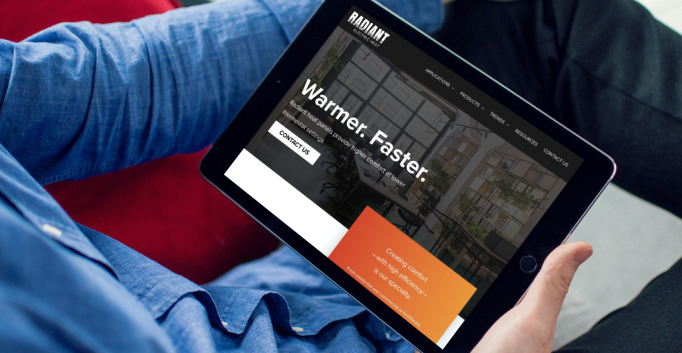
Your building material brand’s unique value proposition (UVP) is a critical component of your marketing strategy. Now that you’ve honed your differentiator into a definitive statement, you need to bring that statement to life through creative execution.
However, you can’t just copy and paste your UVP into a Google ad or LinkedIn carousel and call it a day, no matter how sharp it is. If you want your UVP to hit home, you need to tailor your creative execution around three things:
- The channel and tactic
- What you are asking the audience to do
- What information the audience needs at each touchpoint
These guideposts will equip you to create more effective marketing campaigns, generate more leads, and ultimately drive more revenue.
Digital channels and marketing tactics impact audiences differently
Different marketing channels and tactics serve different purposes and audiences — especially in the BPM industry. There’s no one-size-fits-all approach. This means you’ll need to switch up the way you introduce your UVP from one channel and tactic to the next to get the idea across.
There is no shortage of variables to work with. But to get started, consider your target audience(s).
- Where are you most likely to reach them?
- What types of tactics work well on that platform?
For example, if you’re trying to reach plumbing contractors on Facebook, a quick video highlighting your UVP could grab their attention between jobs.
Alternatively, if you need to reach architects on Instagram, a gallery of images of your product in action that solves a common problem may be the way to go.
Either way, one single approach will not yield the results you’re looking for. It’s best to cast a wide, strategic net.
Pro tip: Meta platforms such as Facebook and Instagram can reach a wider audience in a cost-effective way, while LinkedIn provides opportunities for specific targeting, but at a higher cost. Need to drive home your differentiator to B2B professionals? A tailor-made LinkedIn carousel may be a good use of your budget. Or do you simply need to launch your UVP? That’s better generalized with look-a-like audiences on Facebook or Pinterest.
Make your call to action clear by considering what you want your target audience to do
Each piece of your UVP’s creative execution must have a reasonable and compelling call to action. And it must make sense with where your audience is in the buyer journey. If it doesn’t, your marketing efforts miss the mark and lose on your ROI.
It happens all the time: Building materials brands want to collect first-party data for lead generation, no matter what stage of the buyer’s journey. While it’s true that first-party data is essential to an effective marketing strategy, you have to be thoughtful about when you ask for it.
For instance, collecting information makes sense if you want your target audience to schedule a demo. That means they are probably close to making a purchasing decision. They’ve done the initial research and now they’re moving further down the funnel.
However, if your objective is for your target audience to simply learn more about your products, give them a link to a product page so they can dig deeper. They’re not as far along in the buyer’s journey, so the information they’re consuming isn’t so high value that it warrants their information for a follow-up sales call.
It doesn’t matter if you’re asking prospects to sign up for a free trial or download a white paper. Making sure the action is easy to follow and relevant to the buyer’s stage will set you up for success. You’ll get the right people taking the right actions at the right time, maximizing your UVP every step of the way.
Give the people what they want: information relevant to their goals
As purchasers move further down the funnel, they’re collecting more information about your product. The way you position your UVP can make the difference between a conversion and a missed opportunity.
Making an informed decision doesn’t happen by accident. It’s achieved when a buyer consumes carefully strategized material, presented in compelling ways. Therefore, the messaging surrounding your UVP should cover the spectrum: from a high-level value proposition to the nitty gritty of technical details.
For example, prospects at the top of the funnel may be more interested in high-level value propositions and educational materials. Meanwhile, middle-of-the-funnel prospects may require more specific product information and technical details.
Understanding what information your audience needs at each stage of the buyer journey is crucial to developing effective creative execution that resonates with your target audience.
Take a strategic approach with Point to Point to maximize your UVP’s creative execution
Your UVP is the linchpin that keeps your building materials brand relevant and drives positive results for your business. But unless your creative expressions are executed in a thoughtful way — every step of the way — your message will fall flat.
Planning how, where, and to whom to present your UVP is essential. But it can also be daunting if you do it all by yourself.
Don’t want to strategize alone? We’re here to help.